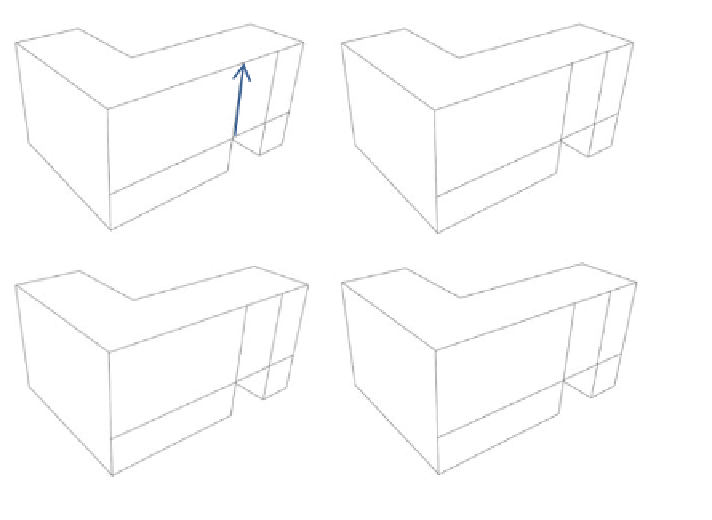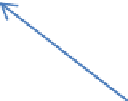Geoscience Reference
In-Depth Information
(a)
(b)
(c)
(d)
Shared edge
Fig. 7
The geometric segmentation process on each face
simpler parts, thus, making it easier to thoroughly analyse the segmented structures
while the semantic data is still intact. The segmentation by fitting primitives will
attempt to identify shapes from a small family of primitives such as cuboids and
cylinders, in the complex shapes of the parent geometries.
The segmentation method will extract the boundary nodes and classify them
according to their parent geometries and surface ID respectively. It means that
every geometric faces in the parent geometries will be given a unique ID. Then,
each node from every faces in the parent geometries will be tested against the
predefined criteria and projected orthogonally to relevant boundary lines.
Then the process will move on to the connecting face that share a boundary with
the previous face and the same process will be repeated but this time the newly
accepted nodes will also be taken into account if it was projected on the common
boundary. Figure
7
shows the selection of faces in the segmentation process.
This process will be done face by face until all faces have been visited. After
visiting the last face, the segmentation will validate all projected nodes to ensure
all accepted nodes have been projected on every eligible boundary. Figure
8
shows
the result of the segmentation process.


































